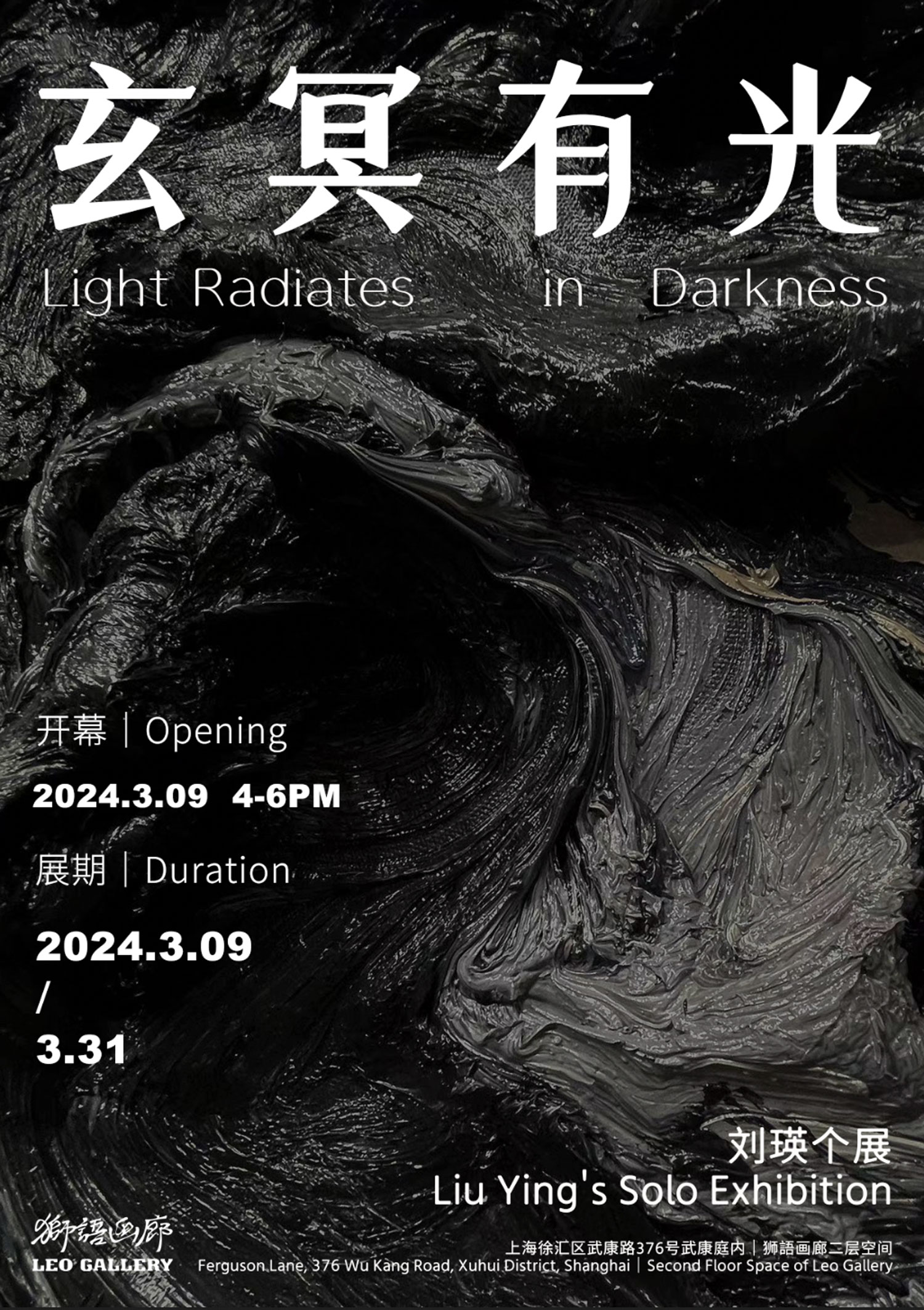展期 Period:
2024.3.9—2024.3.31
艺术家 Artist:
地点 Venue:
狮語画廊 Leo Gallery(上海)
新闻稿 Press Release:
狮語画廊于2024年3月9日荣幸呈现刘瑛于中国大陆首次个人展览「玄冥有光」,汇聚艺术家过去一年的新作。
「玄」为黑,「冥」亦是黑。玄冥二字合在一起指向道家「无」的境界,即所谓「玄冥之境」。刘瑛的绘画并不旨在体现绝境处的幽黑,反倒透出暗处蓬勃生长的能量。「越是在黑暗的地方,越容易看到光,哪怕是很微弱的光。」艺术家借助狂疾有力的笔触,将观者循循引入「光」的栖息之处。
自2020年首次个展以来,刘瑛一直在探索抽象表达手法的可能性。它们涵盖着人类行为、日出、河流、雷暴等各种现象。她的作品着重表达对于自然和生命的崇敬,而这一创作精神其实远超文化的限制,欢迎观者各种的解读——她作品中澎拜的笔触既能让人联想到盘古开天的中国神话,也仿佛在宣泄激昂高涨的人类情感。
「我在创作过程中,是拼尽全力的。一边是天然直觉,一边是控制,要把两者协调地合并在一起,没有规律可循。」刘瑛浩浩荡荡的笔触讲求以有形的元素,表达出无形的力量、情感与经历。诚然,刘瑛的艺术观建基于直觉,而非形式,但她的直觉并非毫无章法。她毕业于中国美术学院,精通写实的技法。虽然她发展出的抽象手法看似随心所欲,但其用色、层次和轻重上的平衡,以及大胆的笔致,皆能将各异的元素合而为一。作品中颜料厚涂的特征,也映衬出她雕塑专业的训练。厚重的油彩互相交叠、抗衡,趋近立体的形态,更加彰显出艺术家在创作时的力量强度。
任何抽象的笔迹,都是绘画过程的一种纪录。作为观者,我们细赏刘瑛作品时,不单被肆意纵横的笔触、壮丽的用色及交错的层次所摄,更会被画面吸引去深思艺术家创作背后的每个抉择和心路历程。在我们尝试串连层层相勾的笔触和用色的时候,一切绘画元素会在对立、抗衡、妥协或和解之中,成为反映我们生活中各种能量转化的一面明镜。
摘自黄熙婷《凌云之势:刘瑛的新作》。
Leo Gallery is thrilled to announce Liu Ying's inaugural solo exhibition in mainland China, titled Light Radiates in Darkness, on view from March 9 to March 31, 2024. This exhibition showcases the artist's latest creations from the past year.
The characters "玄" (Xuan) and "冥" (Ming), both meaning black, when combined, allude to the Taoist concept of "nothingness," often described as the "realm of mystery." However, Liu Ying's paintings transcend the portrayal of mere darkness; they illuminate the vibrant energy thriving within it. "The darker the surroundings, the more perceptible the light, even if it's faint." Through vigorous and commanding abstract strokes, the artist leads the observer into the domain of "light" within the enigma.
Since her solo debut in 2020, Liu Ying has continued to explore the expressive potential of abstract gesture. The artist considers her canvases of bold, riveting impasto as “transposition” of vital energies distilled from daily life—from human behaviour and social interactions to natural phenomena such as a sunrise, a flowing river, or a thunderstorm. Liu’s paintings in fact exude a reverence for life that will resonate across cultures and invite diverse interpretations—the vibrant ruptures on her canvases just as easily recall the Chinese creation myth of Pangu separating sky and earth from primordial chaos, as they appear to narrate the turbulent facets of human emotion.
“When I am painting, I am always working to the absolute limits of my strength. If my energetic force in that moment is insufficient to the task I have set myself, or if my control of the process is not good enough, then I have no choice but to destroy the painting and start all over again.” Liu’s bravado brushwork ultimately seeks visual forms for expressing intangible energies, emotions, and experiences. Her artistic determination is foremost intuitive rather than formalist. Nonetheless, it is intuition with a method. Classically trained at the China Academy of Art, Liu is well-versed in the techniques of realist painting. Even though the kind of abstraction she has now developed appears spontaneous, firm technical control shines through in her balancing of colours, layers, and the weight and breadth of brushstrokes that cohere different visual elements into a total image. Her original training in sculpture also translates in her use of impasto, wherein oil colours are often aggregated into wrought, undulating, three-dimensional outgrowths that further accentuate the magnitude of energies that she transposes onto her canvases.
As with any kind of gestural abstraction, the painting is also a record of the creative process. Contemplating Liu’s canvases, we are drawn by their sinuous paint streaks, sharp bends of colour, and complexity of layers to imagine the artist’s decisions and journey. As we begin to make connections between different brushstrokes, sequence the layering of colours, the paintings come to life as greater than a sum of its gestures. They become cathartic microcosms of confrontation and dilemma, of compromise and resolution that mirror our patterns of energetic exchange in everyday life.
Excerpted from “Sublime Gestures - New Works by Liu Ying” written by Joyce Hei-ting Wong.

